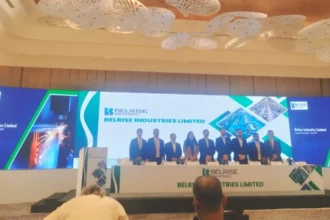Have you ever wondered how your state government plans to transform the way you travel while making the air cleaner for everyone? Maharashtra has just launched an ambitious electric vehicle policy that will change transportation across the state. According to the Economic Times, this comprehensive plan runs from April 2025 to March 2030 and aims to make electric vehicles a common sight on Maharashtra’s roads.
Understanding the Policy’s Reach and Timeline
This new policy covers six major cities where millions of people live and work every day. The five-year duration gives enough time for real change to happen. Let’s break down what this policy actually covers:
- Geographic Focus: The policy targets Mumbai, Pune, Nagpur, Nashik, Chhatrapati Sambhajinagar, and Amravati because these cities have the highest vehicle density and can create the biggest environmental impact
- Timeline Strategy: Five years allows manufacturers to scale up production, gives people time to adapt to new technology, and provides sufficient period for infrastructure development
- Leadership Structure: A steering committee led by the chief secretary will oversee implementation and make necessary adjustments as the policy progresses
Financial Benefits That Make Electric Vehicles Affordable
The policy offers substantial money savings to encourage people to switch from petrol and diesel vehicles. These financial incentives work like government discounts that reduce the actual price you pay. Here’s how different vehicle categories benefit:
| Vehicle Type | Subsidy Rate | What This Means |
|---|---|---|
| Private Cars | 10% of base price | If you buy a ₹10 lakh electric car, you save ₹1 lakh directly |
| Two & Three Wheelers | 10% for private use | On a ₹1 lakh electric scooter, you get ₹10,000 back |
| Commercial Vehicles | 15% subsidy rate | Goods carriers get higher discounts because they drive more |
| Electric Buses | Up to ₹20 lakh | Public transport gets maximum support for serving many people |
Additionally, electric vehicle owners get complete exemption from motor vehicle tax and free travel on expressway tolls, saving thousands more rupees annually.
Building the Infrastructure for Electric Future
The policy recognizes that charging stations are like petrol pumps for electric vehicles. Without them, people won’t buy electric cars. The infrastructure plan ensures you can charge your vehicle conveniently:
- Highway Network: Charging stations every 25 kilometers means you can travel long distances without worrying about battery running out
- Building Requirements: New residential and commercial buildings must include charging facilities, making it convenient to charge at home or work
- Financial Support: Public charging stations receive up to 15% viability gap funding to help private companies invest in this infrastructure
- Government Leadership: All new government vehicles for city travel must be electric, and 50% of utility vehicles in major cities must be electric, setting an example
Environmental and Economic Impact
This policy targets preventing 325 tonnes of PM 2.5 and 1000 tonnes of greenhouse gas emissions. PM 2.5 refers to tiny pollution particles that cause breathing problems and heart disease. The 30% electric vehicle penetration target by 2030 means almost one in three vehicles on Maharashtra roads will be electric, dramatically improving air quality for everyone.
Will Maharashtra become India’s leading electric vehicle hub by 2030? This policy provides the financial incentives, infrastructure support, and government commitment needed to make electric vehicles mainstream, potentially transforming how millions of people travel daily.











